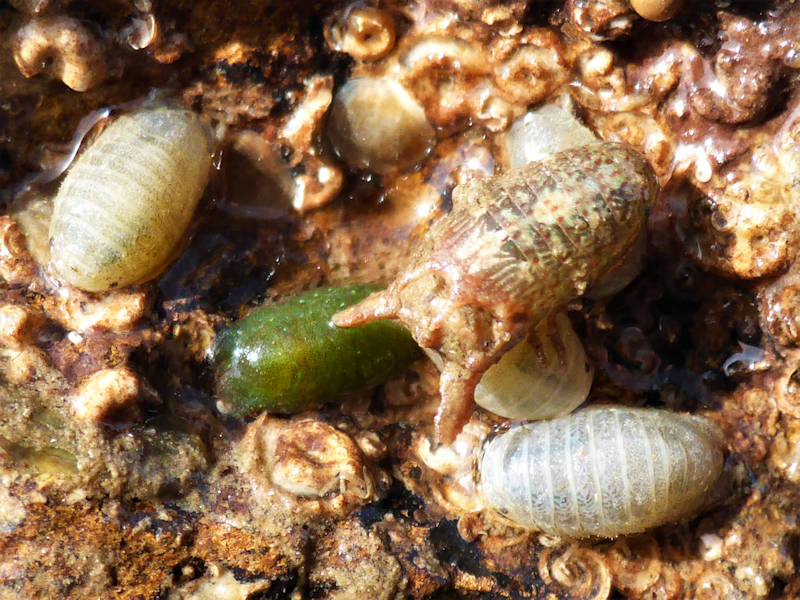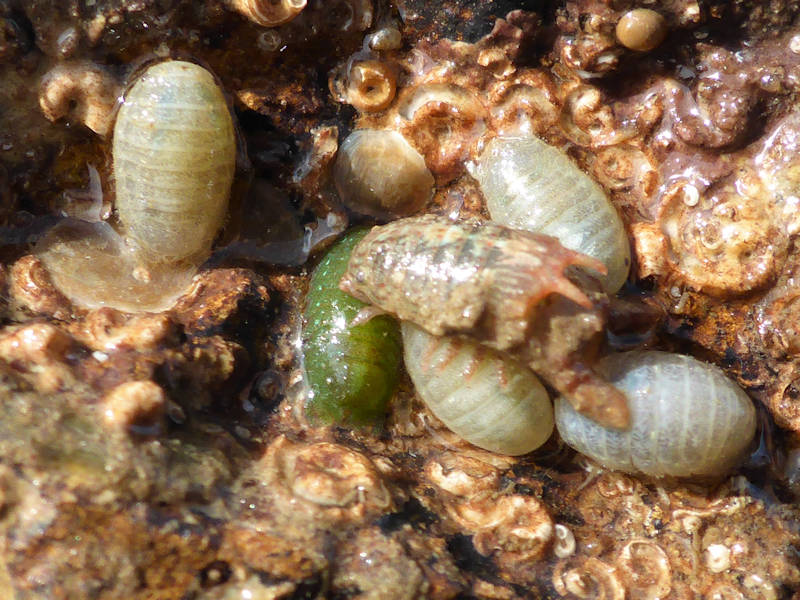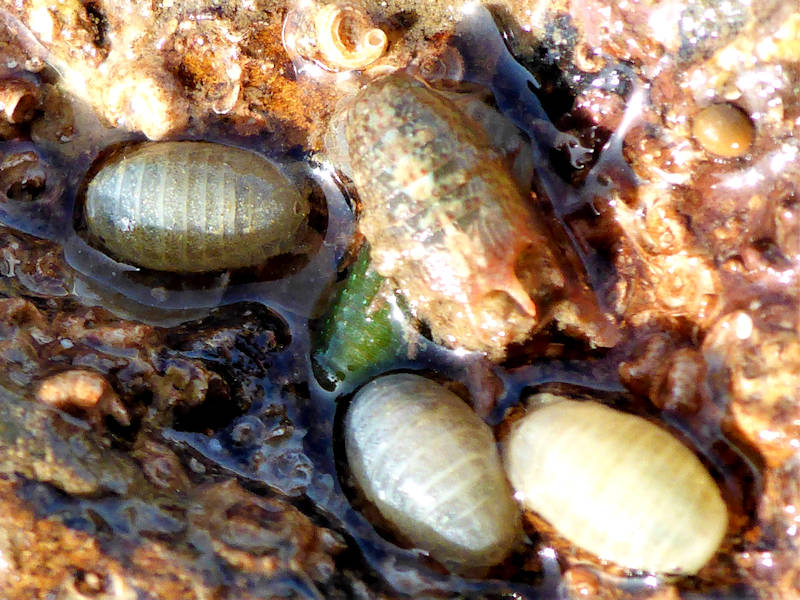A sea slater (Dynamene bidentata)
Distribution data supplied by the Ocean Biodiversity Information System (OBIS). To interrogate UK data visit the NBN Atlas.Map Help
| Researched by | Eliza Gibson-Hall | Refereed by | This information is not refereed |
| Authority | (Adams, 1800) | ||
| Other common names | - | Synonyms | Dynamene bidentatus , Oniscus bidentata |
Summary
Description
Dynamene bidentata is oval in shape its five anterior body segments fused together. Males can reach up to 7 mm in length compared to 6 mm for females. The sixth abdominal (pleon) segment is fused with the posterior (telson) forming a pleotelson (glossary) which can articulate freely. Males and females of this species differ in appearance (sexual dimorphism). The pleotelson in domed and smoothed in females but rugged in males with a central projection (tubercle). This tubercle is distinctively bluntly bilobed (two lobes). Colouration for this species is variable with males mostly brown and females green, red or yellow in colour. Mated females moult and turn white or colourless.
The top of the branched legs (endopods) is fused with the peduncle (glossary). The uropods (glossary) are lateral and biramous for both sexes, although males appear more bristly. The segments of the body are equal in females with males producing two pairs of backwardly positioned processes. Females can be distinguished from other species such as Sphaeroma and Lekanesphaera by a notch in the middle of the rear segment.
Recorded distribution in Britain and Ireland
Recorded along the south coast of Britain, Channel Islands, north coast of Cornwall and the west coast of Wales. Also recorded from the Isle of Man, south-west coast of Scotland, near Edinburgh, the Hebrides and the north-east coast of Ireland. A single record from above Galway.
Global distribution
Records from the north coasts of Spain, France and The Netherlands, Mediterranean, Sri Lanka and the British Isles.
Habitat
Adults are usually found in shallow waters in either rock crevices or in barnacle tests. Juveniles are found intertidal amongst algae, which they feed on.
Depth range
0 - 30 mIdentifying features
- Male and female are sexually dimorphic
- Body is oval shape with a pleotelson. In females this is smooth but in males this is rugged
- Males have a tubercle which extends out from the pleotelson and is bluntly bilobed
- Males are usually brown in colour whereas females range from green, red to yellow, appearing white/colourless post copulation.
Additional information
The eggs are carried by the female in a brood chamber attached from the 1st to 4th pereiopods. Males can have a ‘hareem’ of females, with up to ten females surrounding him. Females live for a year, males for about two years.
Listed by
- none -
Bibliography
De Kluijver, M. J. & Ingalsuo, S.S. 2015. Dynamene bidentata. Macrobenthos of the North Sea - Crustacea. Marine Species Identification Portal [On-line]. ETI BioInformatics in the KeyToNature programme. Available from: http://species-identification.org/species.php?species_group=crustacea&id=556
Hayward, P.J. & Ryland, J.S. (ed.) 1995b. Handbook of the marine fauna of North-West Europe. Oxford: Oxford University Press.
Holdich, D.M., 1968. Reproduction, growth and bionomics of Dynamene bidentata (Crustacea: Isopoda). Journal of Zoology, 156, 137-153.
Holdich, D.M., 1976. A comparison of the ecology and life cycles of two species of littoral isopod. Journal of Experimental Marine Biology and Ecology, 24, 133-149.
Naylor, E., 1972. British marine isopods. London: Academic Press. [Synopses of the British Fauna, no. 3.]
Datasets
NBN (National Biodiversity Network) Atlas. Available from: https://www.nbnatlas.org.
OBIS (Ocean Biodiversity Information System), 2025. Global map of species distribution using gridded data. Available from: Ocean Biogeographic Information System. www.iobis.org. Accessed: 2025-07-30
Citation
This review can be cited as:
Last Updated: 16/10/2018







